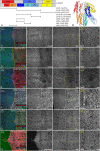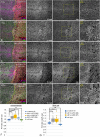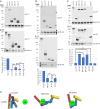Recruitment of Jub by α-catenin promotes Yki activity and Drosophila wing growth
- PMID: 30659113
- PMCID: PMC6432719
- DOI: 10.1242/jcs.222018
Recruitment of Jub by α-catenin promotes Yki activity and Drosophila wing growth
Abstract
The Hippo signaling network controls organ growth through YAP family transcription factors, including the Drosophila Yorkie protein. YAP activity is responsive to both biochemical and biomechanical cues, with one key input being tension within the F-actin cytoskeleton. Several potential mechanisms for the biomechanical regulation of YAP proteins have been described, including tension-dependent recruitment of Ajuba family proteins, which inhibit kinases that inactivate YAP proteins, to adherens junctions. Here, we investigate the mechanism by which the Drosophila Ajuba family protein Jub is recruited to adherens junctions, and the contribution of this recruitment to the regulation of Yorkie. We identify α-catenin as the mechanotransducer responsible for tension-dependent recruitment of Jub by identifying a region of α-catenin that associates with Jub, and by identifying a region, which when deleted, allows constitutive, tension-independent recruitment of Jub. We also show that increased Jub recruitment to α-catenin is associated with increased Yorkie activity and wing growth, even in the absence of increased cytoskeletal tension. Our observations establish α-catenin as a multi-functional mechanotransducer and confirm Jub recruitment to α-catenin as a key contributor to biomechanical regulation of Hippo signaling.
Keywords: Ajuba; Growth; Hippo; Mechanotransduction; Tension.
© 2019. Published by The Company of Biologists Ltd.
Conflict of interest statement
Competing interestsThe authors declare no competing or financial interests.
Figures




References
Publication types
MeSH terms
Substances
Grants and funding
LinkOut - more resources
Full Text Sources
Other Literature Sources
Molecular Biology Databases

